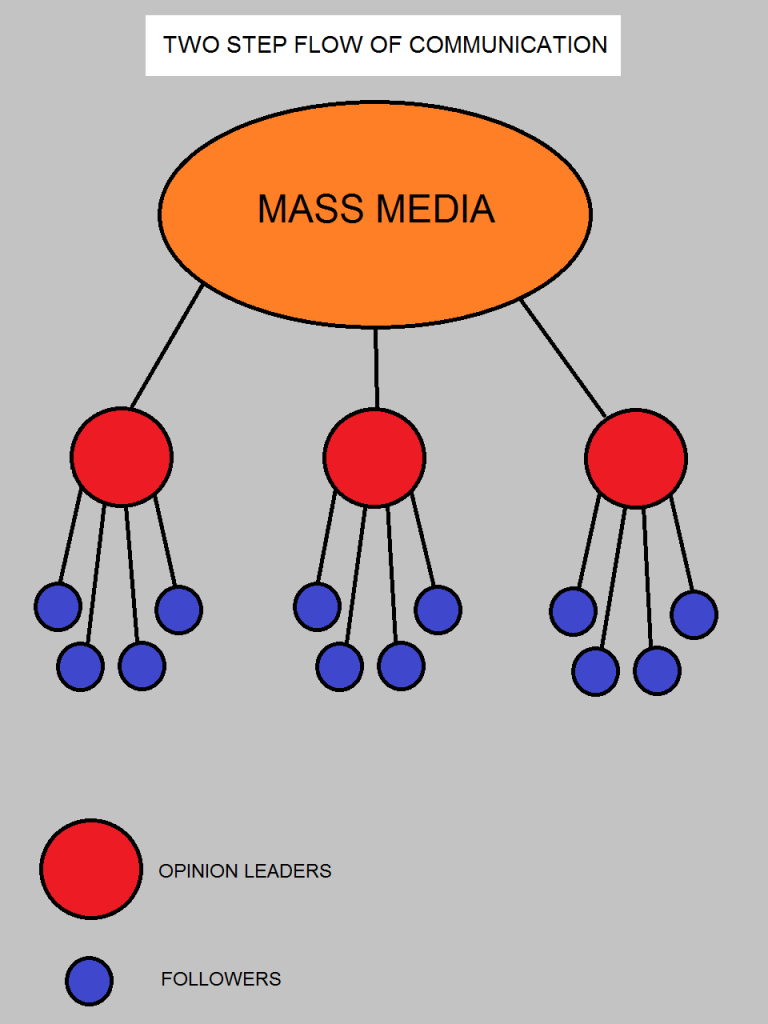The Two-Step Flow Theory is a communication idea developed by Paul Lazarsfeld and Elihu Katz in the 1940s. At that time, many people believed that mass media—like newspapers and radio—had a strong and direct effect on everyone. But Lazarsfeld and Katz found something different.

According to their theory, media messages do not go straight from media to the public. Instead, the message first goes to a small group of people called opinion leaders. These people are more interested in news, politics, or culture. They read or watch media more carefully and form their own opinions. Then, they share their ideas with others around them.
This process is called a “two-step flow”:
- Media → Opinion Leaders
- Opinion Leaders → General Public
This means people often rely on someone they trust to explain media messages. So, the effect of media is not always direct—it is influenced by social relationships.
Today, the theory is still very useful. On social media, for example, influencers act as modern opinion leaders. They review products, share news, and give opinions. Many of their followers are influenced more by them than by official media sources.
Lazarsfeld and Katz explained this in their book Personal Influence (1955). They wrote that mass communication depends on social connections and personal influence—not just on the message itself.
Reference:
Katz, E., & Lazarsfeld, P. F. (1955). Personal Influence: The Part Played by People in the Flow of Mass Communications. New York: Free Press.
Available on Google Books: https://books.google.com/books/about/Personal_Influence.html?id=qD3MwQEACAAJ


I really enjoyed reading your blog! You explained the Two-Step Flow Theory in a very clear and logical way, and I like how you connected the original idea from Lazarsfeld and Katz to modern social media. The example of influencers as today’s opinion leaders makes the concept easy to understand and very relevant to our everyday life.
I also appreciate that you mentioned their book Personal Influence (1955), which adds some academic depth to your post. Your structure is smooth, and the two-step process—media to opinion leaders, then to the general public—is easy to follow. It really shows how social relationships can shape how people receive and interpret information.
If I could suggest one thing, maybe you could include a short real-life example, like how a certain influencer or YouTuber shaped people’s opinions on a product or social issue. That would make your argument even more vivid. It might also be interesting to discuss whether the theory still fits perfectly today, since algorithms and personalized feeds sometimes skip the “opinion leader” step.
Overall, this is a very thoughtful and well-written post. You made a classic communication theory sound both modern and engaging—great job!